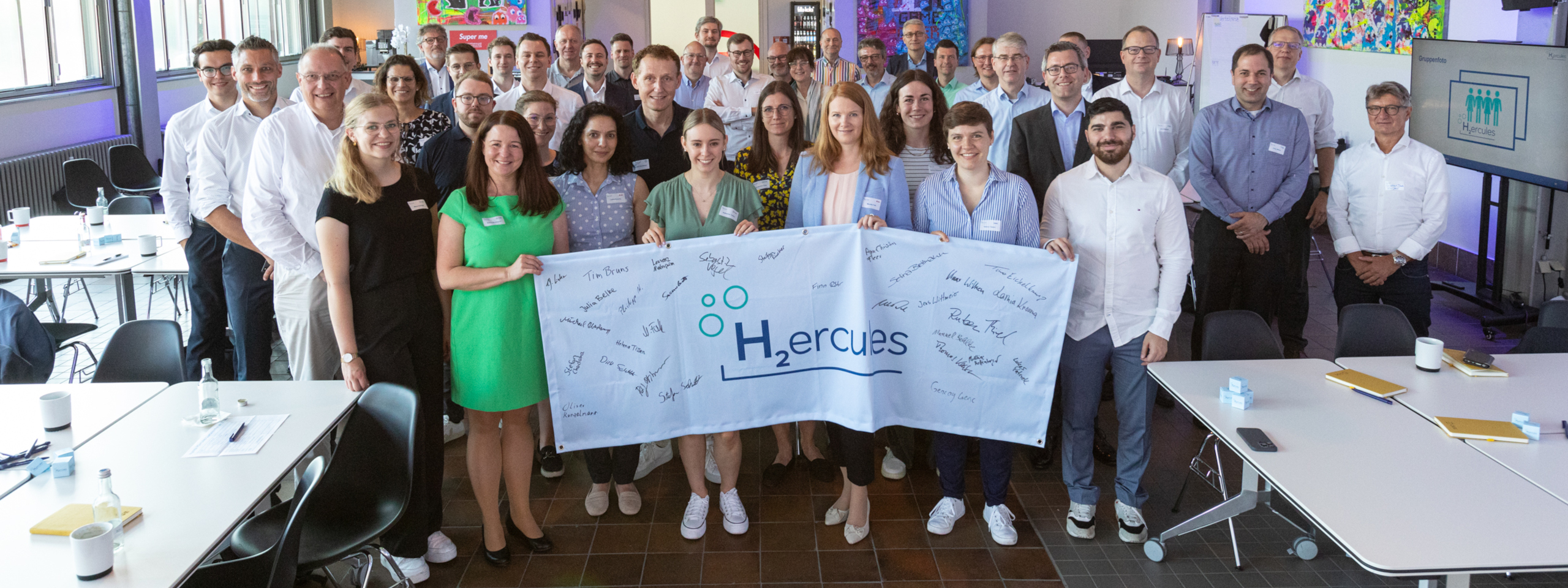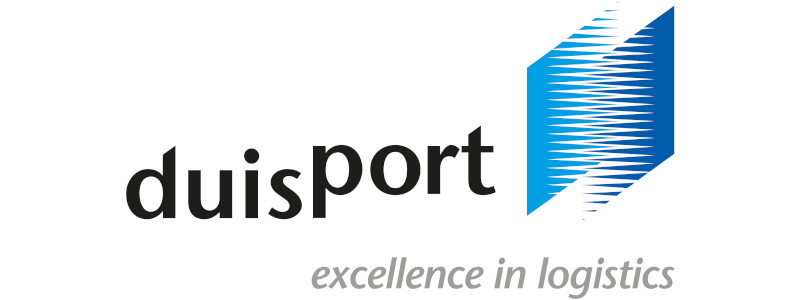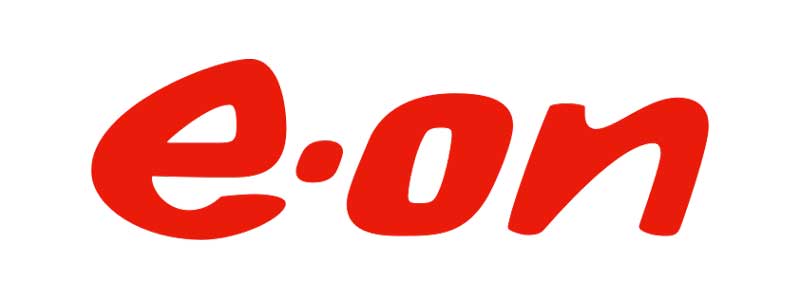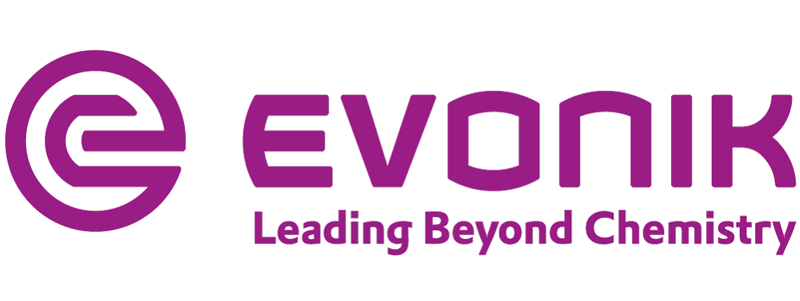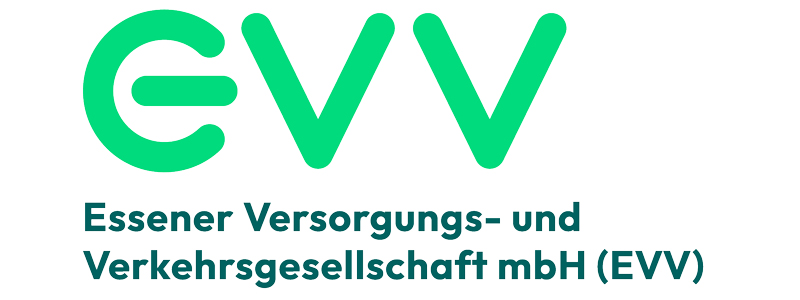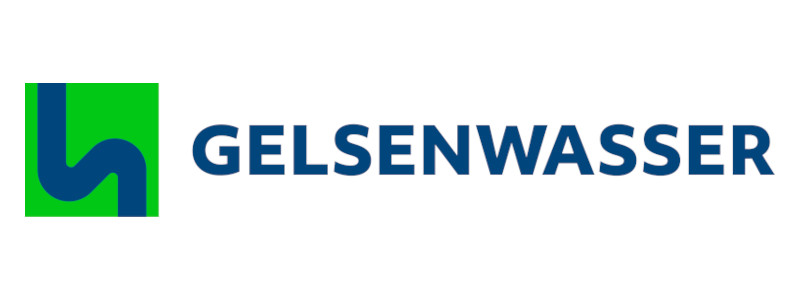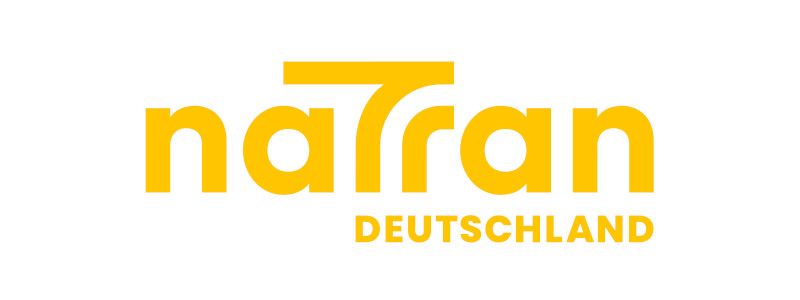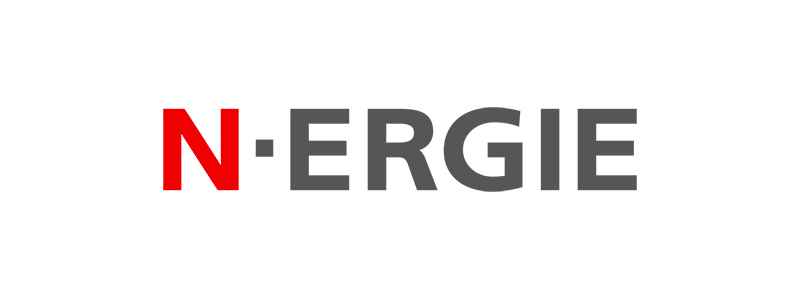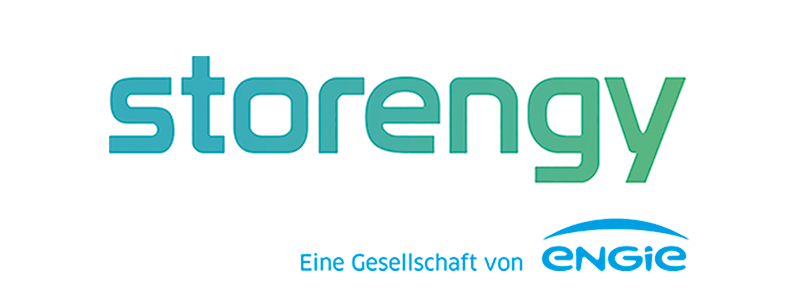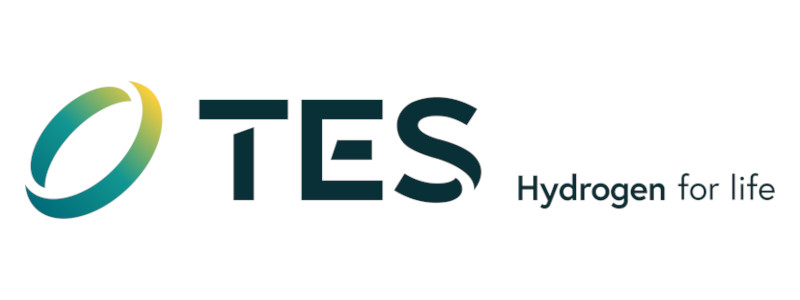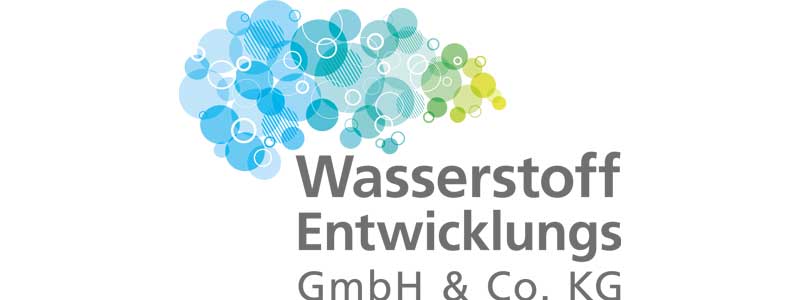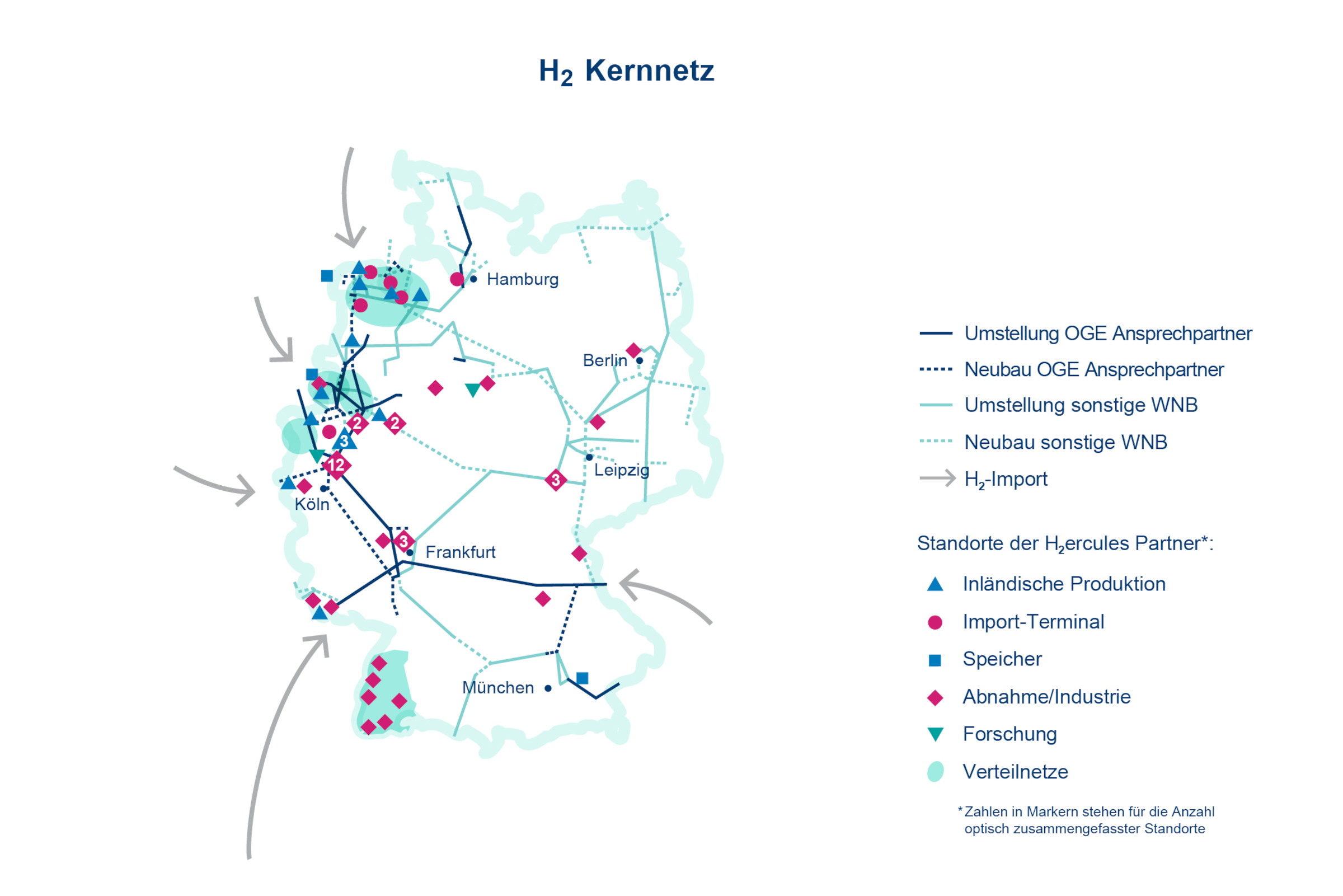The H2ercules initiative was launched in 2022 by OGE and RWE to promote the development of a hydrogen economy in Germany and to create the right conditions for this development. More than 30 additional partners have since joined the H2ercules initiative. The partner group covers the entire value chain and includes other hydrogen producers, importers, storage operators and customers from various sectors such as steel, refining, glass and chemicals. Cross-value-chain cooperation is intended to overcome the ‘chicken-and-egg problem’ on a large scale and pave the way for further projects.
RWE, for example, plans to build large electrolysis capacities on the H2ercules network and aims to also import additional green hydrogen. In addition, existing gas-fired power plants are to be converted to hydrogen, and gas storage facilities on the Dutch border are to be connected to the hydrogen supply system to create additional back-up capacities.
All partners are pursuing the same goal: they want to accelerate the development of the H2 infrastructure and contribute to the ramp-up of a European hydrogen market. In order to take the next steps together, there are plans to pool all resources along the H2ercules network.

